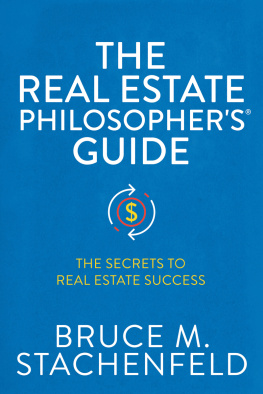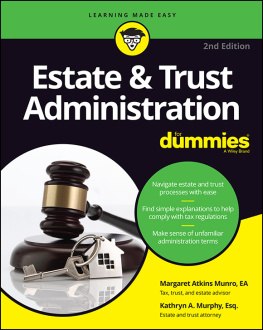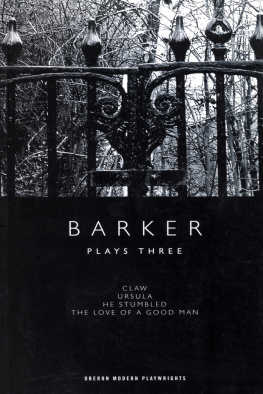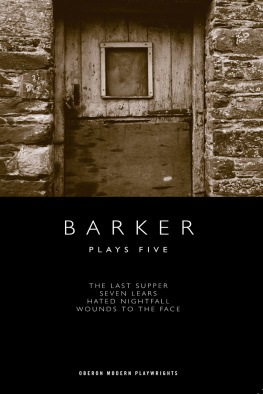Margaret Barker - Newspaper-Real Estate Schemes of the 1920s
Here you can read online Margaret Barker - Newspaper-Real Estate Schemes of the 1920s full text of the book (entire story) in english for free. Download pdf and epub, get meaning, cover and reviews about this ebook. year: 2021, publisher: McFarland & Company, Inc., Publishers, genre: Home and family. Description of the work, (preface) as well as reviews are available. Best literature library LitArk.com created for fans of good reading and offers a wide selection of genres:
Romance novel
Science fiction
Adventure
Detective
Science
History
Home and family
Prose
Art
Politics
Computer
Non-fiction
Religion
Business
Children
Humor
Choose a favorite category and find really read worthwhile books. Enjoy immersion in the world of imagination, feel the emotions of the characters or learn something new for yourself, make an fascinating discovery.

- Book:Newspaper-Real Estate Schemes of the 1920s
- Author:
- Publisher:McFarland & Company, Inc., Publishers
- Genre:
- Year:2021
- Rating:5 / 5
- Favourites:Add to favourites
- Your mark:
- 100
- 1
- 2
- 3
- 4
- 5
Newspaper-Real Estate Schemes of the 1920s: summary, description and annotation
We offer to read an annotation, description, summary or preface (depends on what the author of the book "Newspaper-Real Estate Schemes of the 1920s" wrote himself). If you haven't found the necessary information about the book — write in the comments, we will try to find it.
Newspaper-Real Estate Schemes of the 1920s — read online for free the complete book (whole text) full work
Below is the text of the book, divided by pages. System saving the place of the last page read, allows you to conveniently read the book "Newspaper-Real Estate Schemes of the 1920s" online for free, without having to search again every time where you left off. Put a bookmark, and you can go to the page where you finished reading at any time.
Font size:
Interval:
Bookmark:

NewspaperReal Estate Schemes of the 1920s

McFarland & Company, Inc., Publishers
Jefferson, North Carolina
ISBN (print) 978-1-4766-8181-8
ISBN (ebook) 978-1-4766-4179-9
Library of Congress and British Library cataloguing data are available
Library of Congress Control Number 2020053014
2021 Margaret B. Barker. All rights reserved
No part of this book may be reproduced or transmitted in any form or by any means, electronic or mechanical, including photocopying or recording, or by any information storage and retrieval system, without permission in writing from the publisher.
On the cover: The concessions area at the Pell Lake pavilion could be opened to the outside to sell snacks to bathers during the day. By 1928 the lake level had receded leaving the dance hall on dry land.
Printed in the United States of America
McFarland & Company, Inc., Publishers
Box 611, Jefferson, North Carolina 28640
www.mcfarlandpub.com
In the 1920s a strange phenomenon took place. Newspapers, serving as the front for developers, offered inexpensive plots of land as premiums for subscribing to the paper. This collusion between publications and real estate developers spawned a land buying frenzy and produced dozens of new waterfront summer communities.
One of these newspaper colonies is Pell Lake, in Walworth County, Wisconsin, where I spent all of my childhood summers at the cottage my father built. During those times at Pell Lake I would hear mention made of something about a newspaper giving away or selling lots to subscribers but no one, not even my parents, knew or remembered the name of the paper or anything more specific.
Intrigued, I set out to investigate these rumors about the curious origin of Pell Lake. It was soon apparent that Pell Lake was not the only resort created through a newspaper promotion scheme. Eventually more than fifty such newspaper colonies in the United States and Canada were identified, most of which are today ignorant of their oddball beginnings. It also became clear that the seemingly simple premise of selling land as a bonus to subscribers had a complex underbelly that warranted exposure.
Thus, this book was written to explain how the newspaper deal developed, how the ads were cleverly and judiciously designed, how the promotion grew into a complete blending of two very different businesses, and how the structure of the arrangement resulted in lifelong consequences for the colonies it created.
Local historians, present and former lot owners, and anyone who has ever lived in one of the newspaper colonies will find the history of how these places came into existence not only entertaining but also of value. Persons involved with managing legal, environmental, and social issues at these and other similar waterfront communities will gain helpful insights from the approaches taken by others. Those interested in the history of newspaper journalism, advertising, and real estate promotion will be energized by this example of entrepreneurialism.
My background as a lawyer and familiarity with county courthouses enabled me to locate case files, contracts, deeds, and other land records and to interpret the information they contained. Personnel at the many registrar of deeds and county clerk offices I contacted were all exceedingly helpful. Secretary of state office employees obligingly provided useful information on the registration and status of corporations. In particular the staff at the Walworth County Registrar of Deeds and the Walworth County Clerk offices graciously tolerated my frequent visits and many questions.
Experience as an amateur genealogist provided the tools to track down census records, draft registrations, and vital records containing information about the personalities involved with the scheme. State and local historical societies shared their maps and other archival materials. Volunteers at the Walworth County Historical Society were especially welcoming and helpful. Staffers in the Archives Room at the Wisconsin Historical Society went out of their way to assist by sourcing the vital Pell Lake dam correspondence and obtaining fresh films for me when their records proved unreadable due to the age of the microfilm. I also want to compliment the many graduate students whose well-resourced treatises provided valuable information and help in locating obscure documents.
Several people deserve a personalized thank you. Erik Weber, writer, news publisher, and Beachwood resident, has been researching Bertram Mayo and the history of Beachwood for many years. He generously shared all of his research material including photographs, promotional booklets, and articles I would not otherwise have been able to obtain. Long-time Pell Lake resident Art Oster gave freely of his time recounting stories about the early days of the colony. Judi K-Turkel and Franklynn Peterson, both seasoned authors, graciously provided advice on the book writing process. And then there is Carol Moseson, writer, editor, and good friend, who selflessly copyedited the manuscript and offered invaluable corrections and suggestions.
Most of all, I am indebted to John W. Barker, my beautiful and brilliant husband who sadly died before the book was completed but whose inspiration and guidance shine on every page. To John, I dedicate this book.
It was an irresistible offer emblazoned in bold letters stretching across two full pages of the newspaper.
Greatest Subscription Offer Ever Made
Subscribe to the newspaper for six months and this is what you get for $67.50
a building lot at Pell Lake
use of the lake, bathhouse and beaches
free life membership in the clubhouse
exclusive use with other lot owners of the beautiful park
Concocted by a brazen newspaper promoter and two brothers who inherited a real estate business, this newspaper scheme resulted in the development of Pell Lake, Wisconsin, and approximately fifty other newspaper colonies in the United States and Canada. This book explains the unusual origin of these rural waterfront communities.
A newspaper colony is a real estate development that imposed buying a newspaper subscription as a prerequisite to buying a lot. The purchase of each additional lot mandated an additional subscription. Intended primarily as summer enclaves, these resort developments shared certain characteristics. The lots were small, very small, measuring only 2,000 square feet. They were also inexpensive, promoted as being all priced the same regardless of location, and could be paid for with an installment plan. Lot ownership came with certain standard incentives including use of the roadways, the beach and parklands and, best of all, a clubhouse.
A newspaper resort was easily accessible from the major metropolitan area where the newspaper was published. Nearly all the colonies were located near a body of water and offered fishing, boating, swimming, and other activities. Rights to use the clubhouse and common lands were part of lot ownership, but little was provided in the way of improvements or utilities other than some rough roadwork.
The advertising campaign was overly zealous. For months it employed huge ads decorated with pictures of the site, the clubhouse, and the crowds flocking to the resort to buy lots and share in the fun. In addition to the inescapable advertisements, the papers printed pseudo news stories promoting the benefits of buying lots at the development and reporting on the success of the project. The sponsoring newspaper denied making a profit or being in the real estate business, and proclaimed that it was merely providing a service to its readers to build good will and increase subscriptions. The real estate developer remained in the shadows with the publication serving as the front for all transactions.
Font size:
Interval:
Bookmark:
Similar books «Newspaper-Real Estate Schemes of the 1920s»
Look at similar books to Newspaper-Real Estate Schemes of the 1920s. We have selected literature similar in name and meaning in the hope of providing readers with more options to find new, interesting, not yet read works.
Discussion, reviews of the book Newspaper-Real Estate Schemes of the 1920s and just readers' own opinions. Leave your comments, write what you think about the work, its meaning or the main characters. Specify what exactly you liked and what you didn't like, and why you think so.











